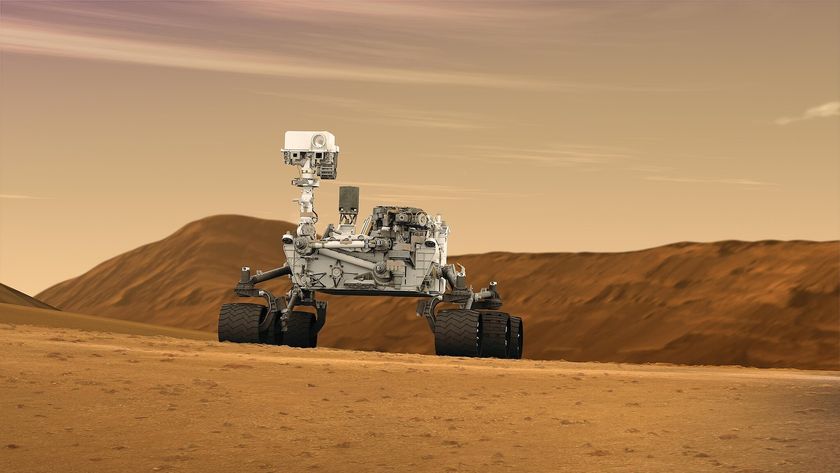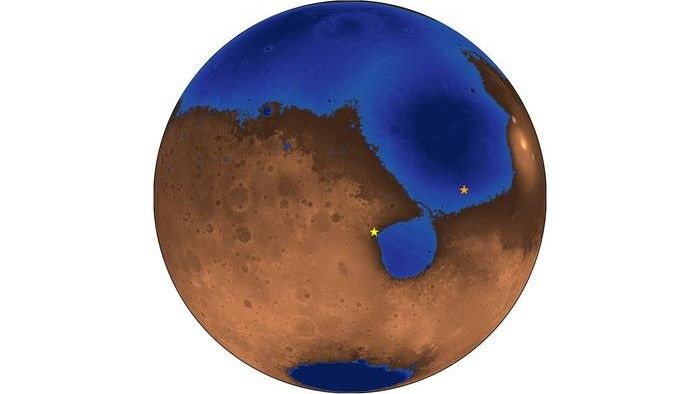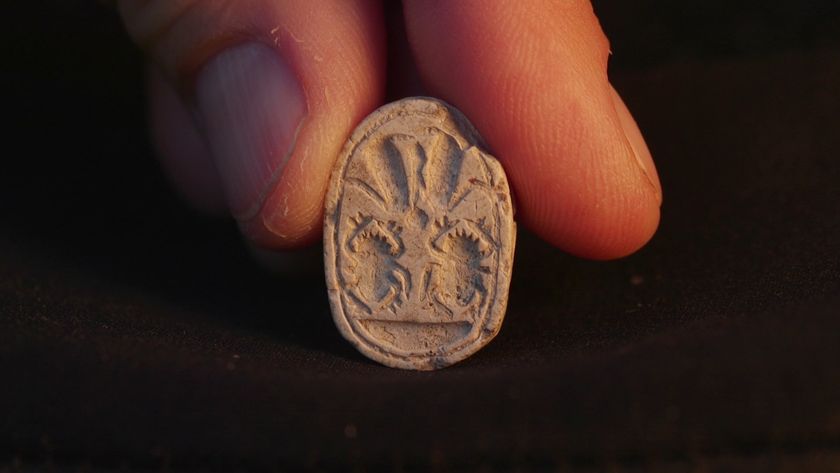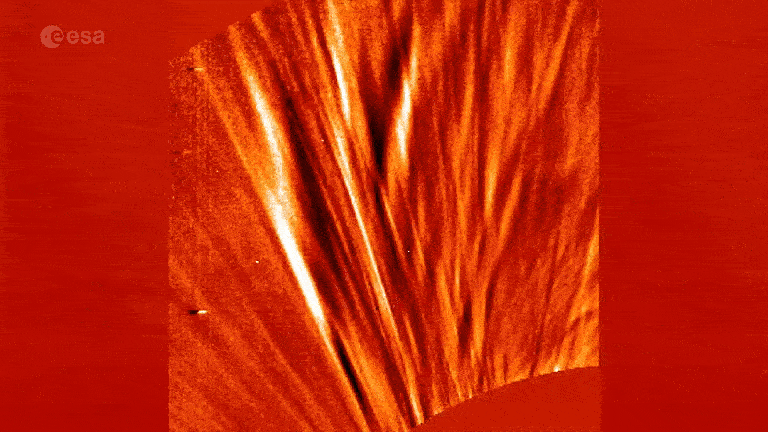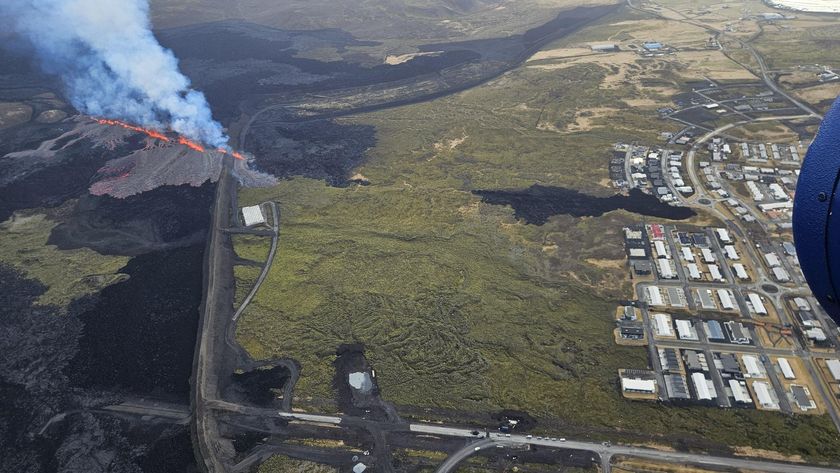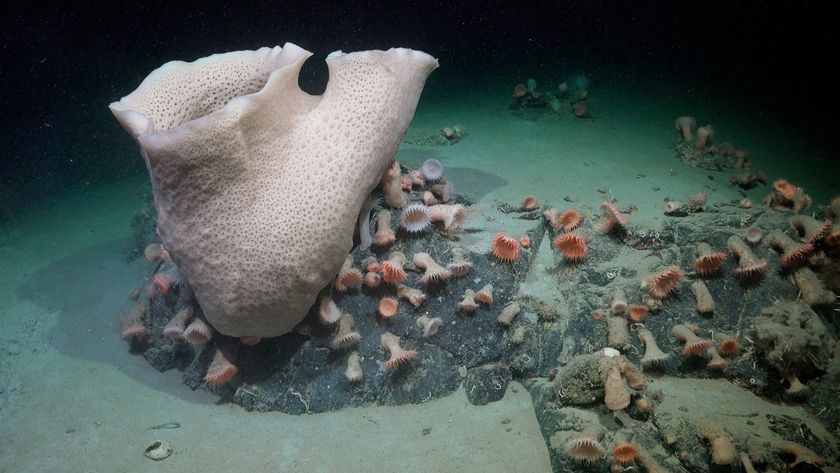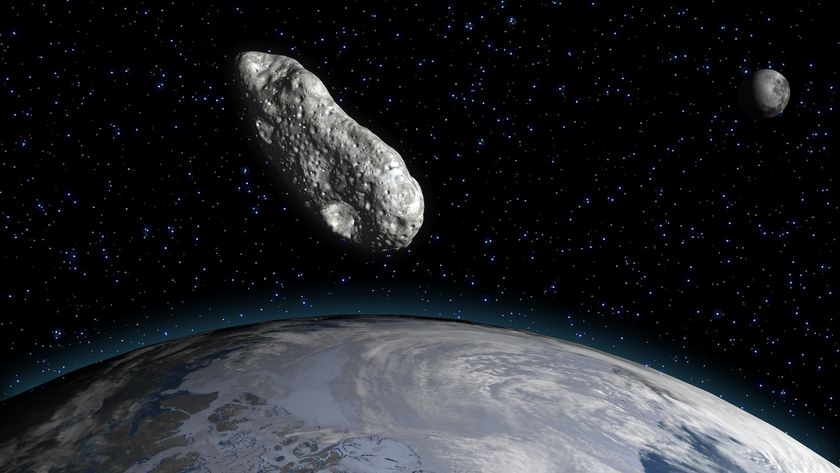Perseverance rover spots peculiar 'spider egg' rock on Mars — and scientists have no idea how it got there
On March 11, NASA's Perseverance Mars rover spotted a mysterious rock made of hundreds of tiny spheres that resemble spider eggs. Studying its formation could help us look for fossilized remains of microbial life on Mars.
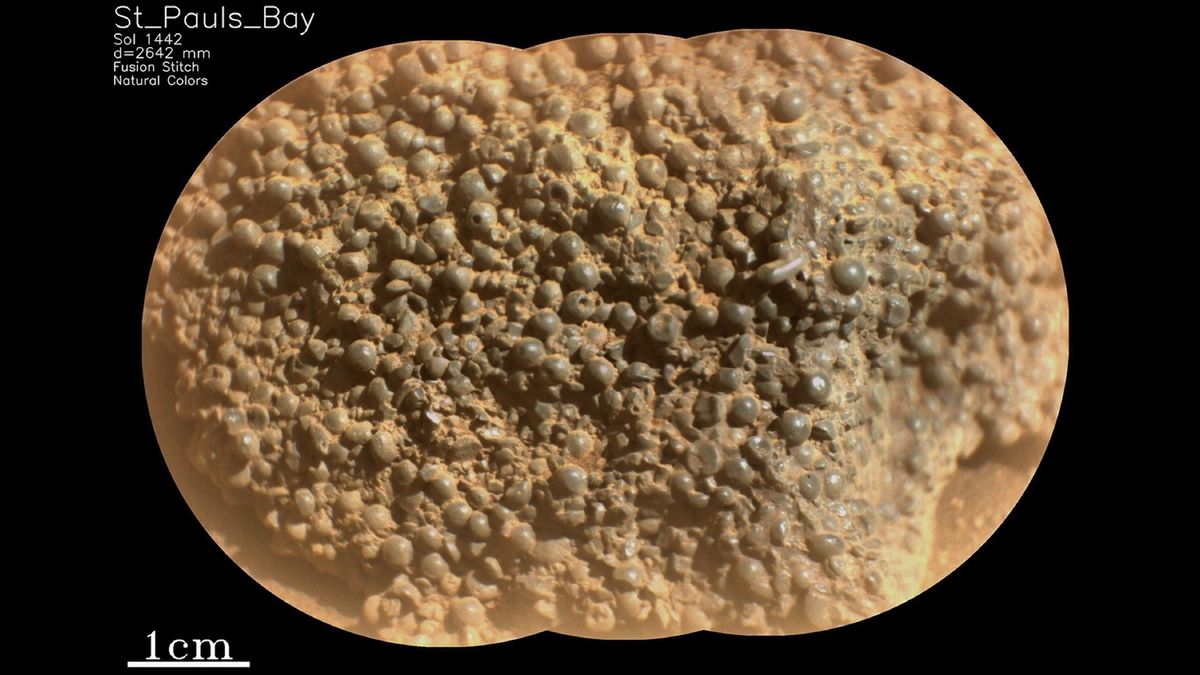
NASA's Perseverance Mars rover has spotted a strange object out of the corner of its "eye": a mysterious rock that resembles a cluster of hundreds of spider eggs. The rock, which was discovered on the slopes of Witch Hazel Hill on the rim of Jezero Crater, is lightly dusted with red sand and conspicuously out of place.
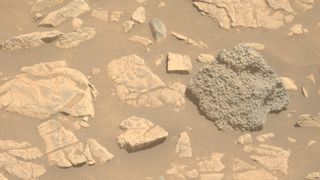
This rock, which the Perseverance team named "St. Pauls Bay," is float rock, meaning it wasn't found where it formed. As a result, it's missing context clues that could explain its strange texture, according to NASA's statement.
It isn't just the geologic context that's missing, either. Something caused the rock to move from its original location, and that movement could reveal insights about Martian geology. Maybe this rock formed when a meteorite struck Mars, vaporizing rock before it condensed into the little granules seen in the photo. If this was the case, the rock could have originated far from its current resting place, and it could reveal how meteor strikes transport materials on Mars, NASA noted.
Related: 'Spiders on Mars' fully awakened on Earth for 1st time — and scientists are shrieking with joy

It's also possible that the rock rolled down Witch Hazel Hill, according to NASA. It may have originated from one of the darker layers on the hill that scientists have detected from orbit. Closer study of Witch Hazel Hill could tell scientists what those darker layers are made of. If they're similar in composition to St. Pauls Bay, it could indicate a layer of volcanic activity, an old meteor strike, the presence of groundwater in the past, or something else entirely, NASA representatives wrote in the statement.
Rocks like St. Pauls Bay give scientists important clues about how the Red Planet has changed over time. Their formation and transportation reveal complex interactions between water, rock and geologic forces on Mars, which can help answer whether the planet could have harbored life in the past.
If Witch Hazel Hill once had groundwater, some of the rock samples Perseverance has been collecting might contain fossilized microbial life. NASA's Mars Sample Return mission, currently planned for sometime in the 2030s, will scoop up these rock samples and return them to Earth for further study.
Sign up for the Live Science daily newsletter now
Get the world’s most fascinating discoveries delivered straight to your inbox.

Damien Pine (he/him) is a freelance writer, artist, and former NASA engineer. He writes about science, physics, tech, art, and other topics with a focus on making complicated ideas accessible. He has a degree in mechanical engineering from the University of Connecticut, and he gets really excited every time he sees a cat.
You must confirm your public display name before commenting
Please logout and then login again, you will then be prompted to enter your display name.
